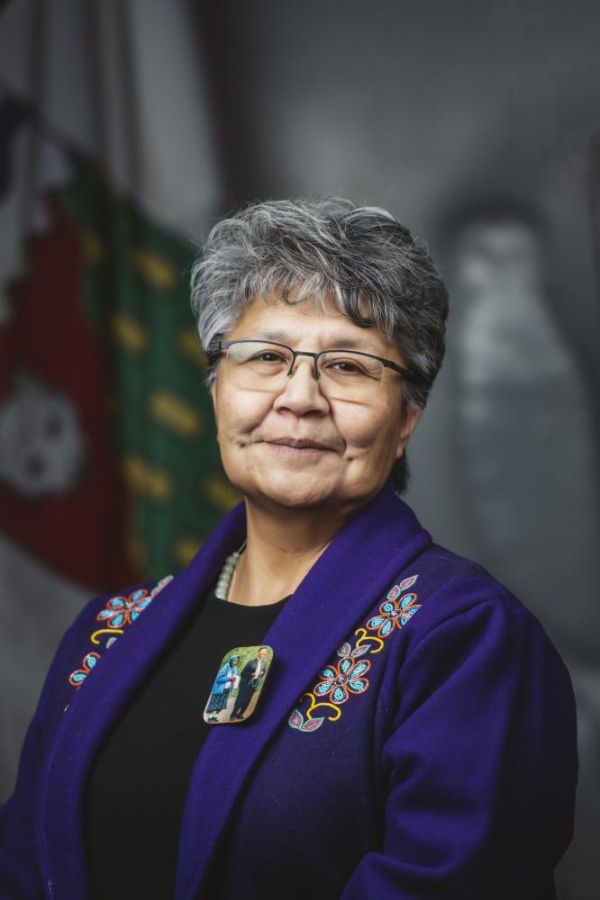Debates of March 31, 2022 (day 111)
Return to Written Question 36-19(2): Mental Health Supports for Residents
Thank you, Mr. Speaker. I have a Return to Written Question asked by the Member for Great Slave to the Minister of Health and Social Services on March 8th, 2022, regarding mental health supports for residents.
1. Staff Turnover Rates
Within the Northwest Territories Health and Social Services Authority, there are health care professionals who provide a holistic array of mental health, addictions, and wellness support services across the Health and Social Services System. Therefore, positions cannot be easily or accurately categorized into just the three positions of mental health counsellors, child protection workers, and family support workers.
For the purposes of our response, we have included all frontline professionals providing some degree of mental health, addictions, and/or wellness support to NWT residents. This includes Case Managers and Aides; Community Health Representatives; Community Health Workers; Community Wellness Workers; Counsellors; Family Preservation Workers; Healthy Family Workers; Social Workers, including those with Child Protection Worker designation; Wellness and Recovery Workers; and other Mental Health Support positions.
As of December 31st, 2021, there were 242 budgeted positions in the Northwest.
Territories Health and Social Services Authority and the Tlicho Community Services Agency, Health and Social Services that provide mental health, addictions, and wellness support to residents of the Northwest Territories. Of those positions, 240 are indeterminate, and two are term.
Of the 242 budgeted positions, there are 25 that are currently administratively vacant. These are positions that are not being actively recruited for within the next three months. Positions can be left administratively vacant for several reasons, including, but not limited to:
A position is identified as being funded, but has not yet been established;
A position is being reevaluated by Job Evaluation;
Funding for a position is being used to double fill another position; or
The vacancy will be of too short a duration to fill through the regular recruitment process. A shortterm vacancy are usually filled with casuals.
As of December 31st, 2021, 45 of the 242 positions were vacant and being actively recruited for within the next three months. This translates into an actively recruiting vacancy rate of 18.6 percent.
In terms of staff turnover rates, unfortunately these rates cannot be provided by individual positions. Turnover rate is determined by the number of exits divided by the number of positions. For the 2021 calendar year the turnover rate for the 242 budgeted positions was 20.5 percent whereas the accession rate was 19.4 percent.
Later today at the appropriate time I will table a document that will give a breakdown of budgeted positions that provide mental health, addictions, and wellness support, by community and by occupation, including the actively recruiting vacant and administratively vacant positions. The document will also break down employee accession and turnover by occupation.
2. Mental Health Vacancy Coverage Planning.
Coverage approaches to staff vacancies are determined by several important operational factors. For example, coverage may be determined by:
The number of available staff to provide coverage in a particular community or region;
The needs of the community;
The preferred modality of coverage, such as virtual vs. inperson or a hybrid approach; and,.
The length of time coverage is required, such as shortterm vs longterm.
Regional Leadership have several shortterm and longterm coverage options available depending on the circumstance. Options range from:
Temporary shortterm coverage from existing team Members, if operationally possible;
Temporary shortterm coverage from other regions, such as by distance or planned travel;
Casual term hiring for temporary coverage ranging from six months up, with an option to extend if required;
Specific to the Community Counselling program, use of contracted counselling services is available for short and longerterm coverage when active recruitment efforts are impacted by low applicant rates and/or unsuccessful screening;
Crisis support: When there are vacancies and a community crisis occurs, regional and territorial resources are scanned and made available to provide immediate support where possible. Crisis response plans can include a number of intentional and sequenced responses including virtual care, simultaneous inperson support, extended hours of service and other organizational supports such as EFAP services, depending on the circumstance; and.
Community and regional level communications are crafted to ensure relevant stakeholders are aware and updated to any temporary service impact or how to reach service providers.
If there are questions regarding region or community specific timelines and current coverage plans, this can be provided.
3. Rates pertaining to Suicidal Ideation and SelfHarm.
The collection of data related to suicide attempts is complex and is currently recorded in a combination of paperbased and electronic medical records. There is currently no single, reliable and accurate data system that enables us to track people across multiple sites in different systems. With that said, hospital discharge data and data collected by the Community Counselling Program are of assistance. Hospital discharge data is collected by the Department of Health and Social Services and the Canadian Institute for Health Information, and contains four potential combinations of selfharm, including suicide attempts, with or without suicidal ideation.
The territorial hospital data will capture significant presentations of selfharm and suicide ideation that also initially present to RCMP, emergency medical services, and health centres.
Where the intention for selfharm or suicide is not clear, medical coding used for this data may not capture all the cases. Not all suicide attempts are disclosed or reported to formal systems. Selfharm also tracks behaviours such as nonsuicidal selfinjury, commonly known as "cutting" types of behaviours, which will confound statistics.
The document to be tabled later today will present territorial hospital discharge data surveyed for the years 20162017 to 20202021 for the total number of people (unique clients) not accumulated or repeat events, and data collected from the Community Counselling Program regarding the number and percentage of people who presented to the Program with suicide ideation or suicide attempts as their primary concern.
The Department of Health and Social Services will continue to work on refining data collection and exploring one, cohesive system for health records across health centres, Community Counselling Programs, and hospital settings.
4. RCMP and First Response Indicators pertaining to Suicidal Ideation and Self Harm.
The Department of Justice has supplied information about the number of RCMP calls where the primary reason for the call is a mental health crisis for the years 2018 to 2020. This category of call is not specific to selfharm or suicide ideation. There is no breakdown to distinguish between different types of mental health crisis or to allow for specific suicide ideation or selfharm calls to be identified. In 2018, there were 1228 calls identified in this category, in 2019, 1458 calls and in 2020, 1503 calls.
Thank you, Mr. Speaker.

















